Hands on: Ford SYNC review
Promising touch and voice-controlled in-car system
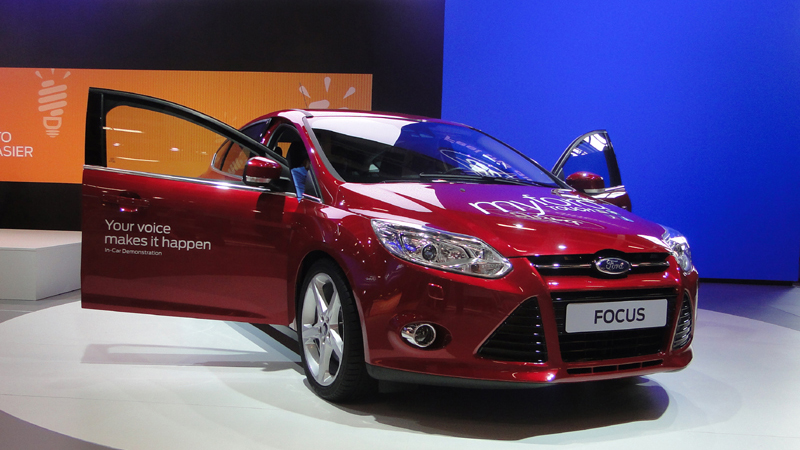
Yesterday Ford announced plans to bring its Ford SYNC in-car infotainment platform to millions here at IFA 2011. But is it any good? To find out, TechRadar got its sticky fingers on a SYNC-equipped Focus.
Initial impressions are good. SYNC boasts a big 8-inch touchscreen. It's much larger than those found in most competing C-segment cars, such as the VW Golf or Vauxhall Astra.
Just as important, the interface looks slicker and responds more swiftly, too. Admittedly, the SYNC screen is clearly lower resolution and the graphics aren't as polished as BMW's market-leading iDrive system. But given the Focus's positioning, SYNC's visuals look best-in-class.
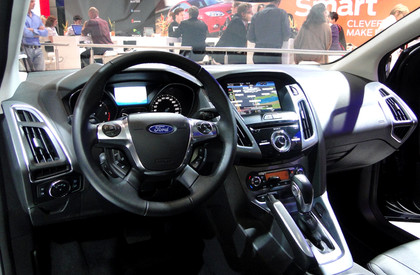
In terms of both interface layout and core functionality, SYNC is based on a "four corners" structure, including connectivity, media playback, climate control and navigation. Let's start with the latter first.
Being a car manufacturer, Ford is well aware that reinventing the wheel is a costly and futile endeavour. So, instead of building a navigation application from the ground up, it partners with specialists NAVTEQ and TeleNav. The result is a pretty solid looking navigation interface that will support full 7-digit postcodes when it arrives in the UK next year.
Given the wide ability of cheap portable navigation units with full postcode support, that might not sound like much of a feature. But lack of proper postcode support still plagues factory-fit nav systems. Ford has also partnered with ViaMichelin to provide SYNC's poin-of-interest database.
What SYNC's navigation system doesn't offer, however, is internet connectivity. Consequently, traffic data is limited to the rather clunky radio-based RDS-TMC system and you don't get Google searches or send-to-car functionality.
Get daily insight, inspiration and deals in your inbox
Sign up for breaking news, reviews, opinion, top tech deals, and more.
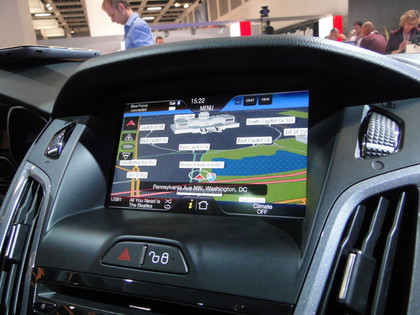
In fact, that lack of connectivity is a consistent theme for the Euro version of SYNC. At launch, media playback will include USB storage, Bluetooth streaming, smartphone syncing and CD spinning. The relevant partner here is Gracenote, supplier of a full music tagging database, complete with album art. What you don't get, however, is any internet radio streaming.
In the US, SYNC has the Pandora internet radio app. With Pandora not available in the UK, it's obviously not part of the mix. Instead, Ford is working on a similar app based on Spotify. However, given the long gestation of SYNC for Europe, we're rather surprised Ford hasn't got Spotify lined up for launch.
That said, it's clear that the SYNC platform is ready to offer apps like Spotify as soon as Ford rolls them out. In terms of internet connectivity, SYNC itself doesn't offer any. Instead, you can either plug in a USB 3G adapter or hook up your smartphone. The advantages of this approach are twofold. Firstly, it means you don't need a separate cellular data account for your car. Secondly, it makes it easier to keep mobile internet access speeds up to date.
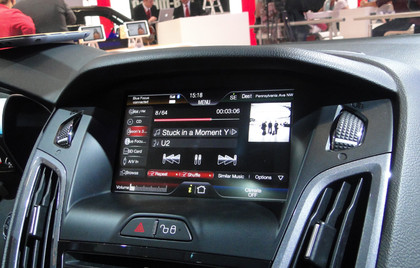
The key point here is that punters swap their smartphones for newer, snazzier models much more often than they change cars. Anyhow, at launch in Europe and indeed the UK SYNC's internet functionality will be limited to providing a Wi-Fi hotspot.
On that subject, we were interested to learn that Ford uses SYNC's Wi-Fi connectivity to install software in cars during manufacture. Intriguing but irrelevant, you say? Not so. Ford plans to extend the use of Wi-Fi to enable owners to execute updates including app installs over Wi-Fi. Imagine parking your car in the garage and wirelessly loading the latest apps and you'll get the idea.
The final important part of SYNC is one that that largely doesn't appear on screen, voice command. Our relatively brief demo only scratched the surface in terms of getting a feel for SYNC's voice control functions.
Only with intimate acquaintance does one learn whether a given voice input system is reliable and consistent enough to be truly useful. However, what we can say is that on paper it gives you full control of the SYNC interface and was 100% accurate during our demo time.
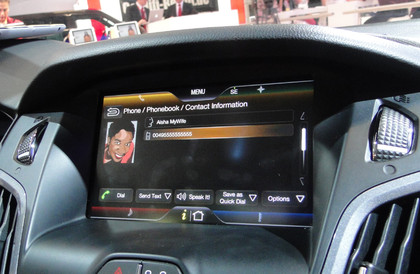
All of which means the success of SYNC will come down to two factors: cost and the speed with which Ford adds connected features. Sadly, Ford's reps at IFA absolutely refused to be drawn on the question of pricing. So all we really have to go on is a commitment to make SYNC accessible to millions.
If it's dirt cheap – say, £300 to £400 – then SYNC will be attractive even at launch without any connected features. However, the market is moving fast and Ford would do well to add apps like Spotify, along with features like Google searching, send-to-car and social networking support (SYNC in the US already offers Twitter support), as soon as possible.
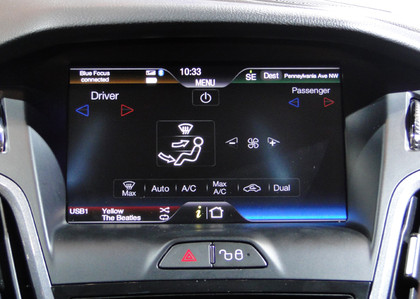
Lastly, for those of you who geek out to hardware specs, here's the dirt on SYNC. It sports a Freescale i.MX51 SOC with a single-core ARM Cortex A8 processor running at 600MHz. 512MB of RAM and 2GB of flash memory round out the hardware. As for background software, SYNC is built on Microsoft's Windows Automotive which in turn is based on Windows CE. So now you know.
It's obviously been a struggle for Ford to prep SYNC for European markets. On this early showing, it still has some work to do.
Technology and cars. Increasingly the twain shall meet. Which is handy, because Jeremy (Twitter) is addicted to both. Long-time tech journalist, former editor of iCar magazine and incumbent car guru for T3 magazine, Jeremy reckons in-car technology is about to go thermonuclear. No, not exploding cars. That would be silly. And dangerous. But rather an explosive period of unprecedented innovation. Enjoy the ride.